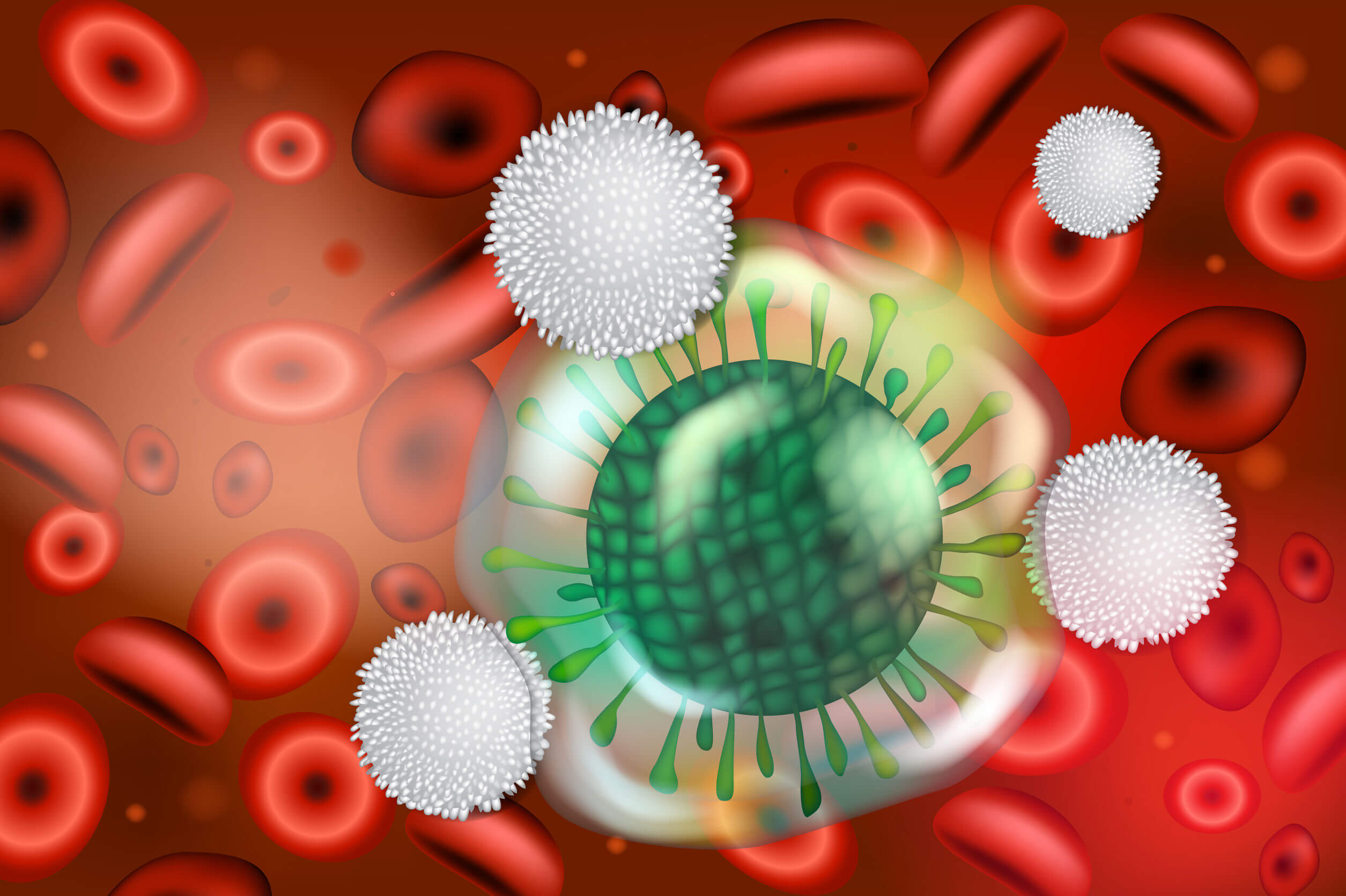Causes and Risk Factors of Anaphylaxis

One of the most serious and dangerous forms of allergy is anaphylaxis. It encompasses a rapidly evolving set of reactions that, if not dealt with in time, can be fatal. We’ll look at the risk factors of anaphylaxis in this article.
For this reason, it’s essential to be well informed in this regard and take the necessary precautionary measures. This includes understanding the causes and risk factors of anaphylaxis in detail.
Before delving into the causes and risk factors, there are a couple of important points about anaphylaxis that everyone should keep in mind.
Worldwide, anaphylaxis has a prevalence (existing cases) of 1 to 3%, although the figures may vary. And with regard to incidence (new cases), according to several authors, it seems that there’s no real figure because, in many countries, such as Mexico and other regions of Latin America, they aren’t well documented.
Although anyone can suffer anaphylaxis throughout their life, it has been observed that it tends to be more common in young people living in developed countries.
Immune causes

The scientific literature states that, previously, anaphylactic reactions were classified as IgE-mediated responses, whereas anaphylactoid reactions were classified as IgE-independent events.
However, over time it was concluded that regardless of the cause, consequences, and treatment for each reaction, the diagnosis was the same: anaphylaxis. Therefore, the terminology could be unified.
Now, regarding the pathophysiology of anaphylaxis, we have the following from the MSD Manual:
“The interaction of antigen with IgE on basophils and mast cells triggers the release of histamine, leukotrienes, and other mediators that cause diffuse smooth muscle contraction… and plasma-leaking vasodilation.”
The same source also explains that anaphylactoid reactions have the same clinical expression as anaphylaxis. However, IgE doesn’t participate in these reactions, but they appear either by direct stimulation of mast cells or by complement-activating immune complexes.
These reactions can be triggered by aspirin and other non-steroidal anti-inflammatory drugs (ibuprofen, naxoprene, etc.), opioids, monoclonal antibodies, radiopaque iodinated contrast agents, and exercise. Regarding the latter, it’s important to clarify that it isn’t exercise alone that could trigger the reaction.
Triggers
Common triggers include certain foods (such as nuts, chicken eggs, shellfish, cow’s milk, soybeans, wheat, sesame seeds, kiwi, and lupine flour).
The same happens with insect bites (fire ants, hornets, honey bees, and Germanic wasps) and contact with latex.
In addition to this, some medications are also included (such as beta-lactam antibiotics, penicillin, insulin, streptokinase, and allergenic extracts) and immunotherapy injections, which, although aimed at improving the general allergic response, can cause anaphylaxis, as can proteins (tetanus antitoxin, blood transfusions).
Sometimes the trigger can’t be identified. In these cases, we speak of idiopathic anaphylaxis.
Risk factors

In addition to taking into account the immune causes and triggers, it’s also important to know what the risk factors for anaphylaxis are:
- Genetics
- Cardiovascular disease (uncontrolled or poorly controlled)
- Patients with cardiovascular disease taking beta or alpha-adrenergic blockers
As we’ve seen regarding the causes and risk factors of anaphylaxis, several points must be taken into account. We often think that anaphylaxis is just a consequence of consuming nuts, and we don’t realize that it could answer many other questions.
Whether you suffer from any allergies or if you don’t know if you might have any, it’s important for you to maintain certain precautions. To do so, the best thing you can do is consult your doctor about it.
They’ll be able to tell you what you can take into account in your day-to-day life, without having to make major changes in your routine.
On the other hand, the doctor will also tell you about the risks of you suffering a serious allergic reaction, after having done a complete check-up.
One of the most serious and dangerous forms of allergy is anaphylaxis. It encompasses a rapidly evolving set of reactions that, if not dealt with in time, can be fatal. We’ll look at the risk factors of anaphylaxis in this article.
For this reason, it’s essential to be well informed in this regard and take the necessary precautionary measures. This includes understanding the causes and risk factors of anaphylaxis in detail.
Before delving into the causes and risk factors, there are a couple of important points about anaphylaxis that everyone should keep in mind.
Worldwide, anaphylaxis has a prevalence (existing cases) of 1 to 3%, although the figures may vary. And with regard to incidence (new cases), according to several authors, it seems that there’s no real figure because, in many countries, such as Mexico and other regions of Latin America, they aren’t well documented.
Although anyone can suffer anaphylaxis throughout their life, it has been observed that it tends to be more common in young people living in developed countries.
Immune causes

The scientific literature states that, previously, anaphylactic reactions were classified as IgE-mediated responses, whereas anaphylactoid reactions were classified as IgE-independent events.
However, over time it was concluded that regardless of the cause, consequences, and treatment for each reaction, the diagnosis was the same: anaphylaxis. Therefore, the terminology could be unified.
Now, regarding the pathophysiology of anaphylaxis, we have the following from the MSD Manual:
“The interaction of antigen with IgE on basophils and mast cells triggers the release of histamine, leukotrienes, and other mediators that cause diffuse smooth muscle contraction… and plasma-leaking vasodilation.”
The same source also explains that anaphylactoid reactions have the same clinical expression as anaphylaxis. However, IgE doesn’t participate in these reactions, but they appear either by direct stimulation of mast cells or by complement-activating immune complexes.
These reactions can be triggered by aspirin and other non-steroidal anti-inflammatory drugs (ibuprofen, naxoprene, etc.), opioids, monoclonal antibodies, radiopaque iodinated contrast agents, and exercise. Regarding the latter, it’s important to clarify that it isn’t exercise alone that could trigger the reaction.
Triggers
Common triggers include certain foods (such as nuts, chicken eggs, shellfish, cow’s milk, soybeans, wheat, sesame seeds, kiwi, and lupine flour).
The same happens with insect bites (fire ants, hornets, honey bees, and Germanic wasps) and contact with latex.
In addition to this, some medications are also included (such as beta-lactam antibiotics, penicillin, insulin, streptokinase, and allergenic extracts) and immunotherapy injections, which, although aimed at improving the general allergic response, can cause anaphylaxis, as can proteins (tetanus antitoxin, blood transfusions).
Sometimes the trigger can’t be identified. In these cases, we speak of idiopathic anaphylaxis.
Risk factors

In addition to taking into account the immune causes and triggers, it’s also important to know what the risk factors for anaphylaxis are:
- Genetics
- Cardiovascular disease (uncontrolled or poorly controlled)
- Patients with cardiovascular disease taking beta or alpha-adrenergic blockers
As we’ve seen regarding the causes and risk factors of anaphylaxis, several points must be taken into account. We often think that anaphylaxis is just a consequence of consuming nuts, and we don’t realize that it could answer many other questions.
Whether you suffer from any allergies or if you don’t know if you might have any, it’s important for you to maintain certain precautions. To do so, the best thing you can do is consult your doctor about it.
They’ll be able to tell you what you can take into account in your day-to-day life, without having to make major changes in your routine.
On the other hand, the doctor will also tell you about the risks of you suffering a serious allergic reaction, after having done a complete check-up.
- “Datos Clave: Reacciones Anafilácticas .” n.d. Manual Merck Versión Para El Público General. Accessed June 15, 2021. https://www.merckmanuals.com/es-pr/hogar/breve-información-trastornos-inmunológicos/reacciones-alérgicas-y-otros-trastornos-de-hipersensibilidad/reacciones-anafilácticas.
- Delves, Peter J. 2020. “Anafilaxia – Inmunología y Trastornos Alérgicos.” In Manual MSD Versión Para Profesionales. https://www.msdmanuals.com/es/professional/inmunología-y-trastornos-alérgicos/enfermedades-alérgicas,-autoinmunitarias-y-otros-trastornos-por-hipersensibilidad/anafilaxia.
- Gómez Ayala, Adela-Emilia. 2011. “Anafilaxia. Clínica y Tratamiento.” Offarm 30 (2): 70–78. https://www.elsevier.es/es-revista-offarm-4-articulo-anafilaxia-clinica-tratamiento-X0212047X11011351.
- McLendon K, Sternard BT. Anaphylaxis. [Updated 2020 Jun 7]. In: StatPearls [Internet]. Treasure Island (FL): StatPearls Publishing; 2021 Jan-. Available from: https://www.ncbi.nlm.nih.gov/books/NBK482124/
- Sienra-Monge JJL, Navarrete-Rodríguez EM, Chávez-Flores U, Lezana-Fernández MA, Baeza-Bastarrachea RA, Baeza-Bacab MA et al. Anafilaxia en niños y ad“Datos Clave: Reacciones Anafilácticas .” n.d. Manual Merck Versión Para El Público General. Accessed June 15, 2021. https://www.merckmanuals.com/es-pr/hogar/breve-información-trastornos-inmunológicos/reacciones-alérgicas-y-otros-trastornos-de-hipersensibilidad/reacciones-anafilácticas.
-
Sienra-Monge JJL y cols. 2019. “Anafilaxia En Niños y Adultos.” Revista CONAMED 24 (3): 107–64. https://www.medigraphic.com/pdfs/COMPLETOS/conamed/2019/con193.pdf.
Delves, Peter J. 2020. “Anafilaxia – Inmunología y Trastornos Alérgicos.” In Manual MSD Versión Para Profesionales. https://www.msdmanuals.com/es/professional/inmunología-y-trastornos-alérgicos/enfermedades-alérgicas,-autoinmunitarias-y-otros-trastornos-por-hipersensibilidad/anafilaxia.
Gómez Ayala, Adela-Emilia. 2011. “Anafilaxia. Clínica y Tratamiento.” Offarm 30 (2): 70–78. https://www.elsevier.es/es-revista-offarm-4-articulo-anafilaxia-clinica-tratamiento-X0212047X11011351.
McLendon K, Sternard BT. Anaphylaxis. [Updated 2020 Jun 7]. In: StatPearls [Internet]. Treasure Island (FL): StatPearls Publishing; 2021 Jan-. Available from: https://www.ncbi.nlm.nih.gov/books/NBK482124/
Sienra-Monge JJL, Navarrete-Rodríguez EM, Chávez-Flores U, Lezana-Fernández MA, Baeza-Bastarrachea RA, Baeza-Bacab MA et al. Anafilaxia en niños y adultos: prevención, diagnóstico y tratamiento. Rev CONAMED 2019; 24(3): 107-164.ultos: prevención, diagnóstico y tratamiento. Rev CONAMED 2019; 24(3): 107-164.
Este texto se ofrece únicamente con propósitos informativos y no reemplaza la consulta con un profesional. Ante dudas, consulta a tu especialista.







